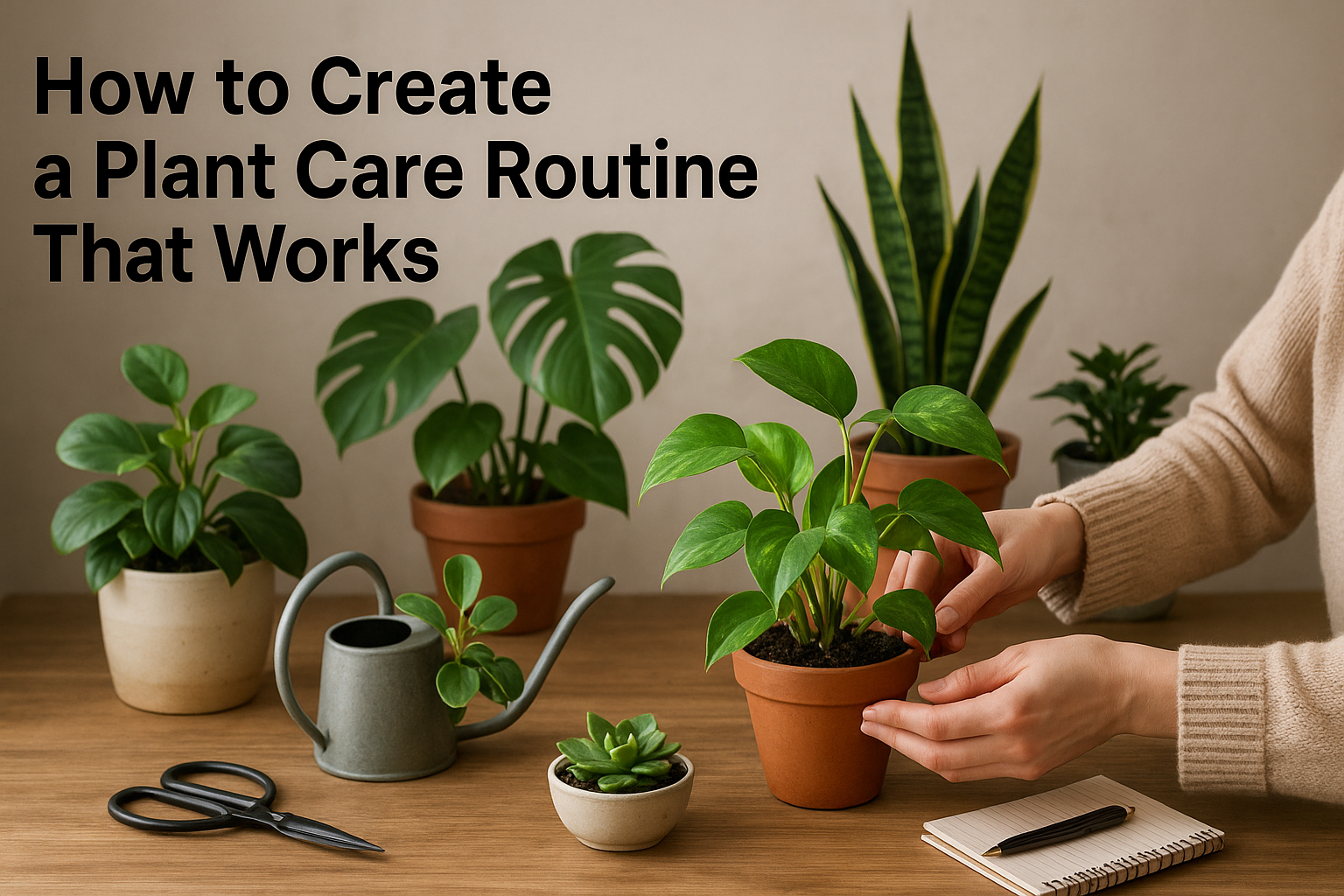Caring for plants at home becomes easier and more enjoyable when you establish a simple, consistent routine. Instead of stressing about when to water, fertilize, or repot, you’ll have a clear plan that keeps your plants healthy and thriving.
Why a Routine Matters
Plants, like people, respond well to consistency. A care routine helps you:
- Avoid overwatering or underwatering.
- Notice early signs of stress or pests.
- Create a mindful habit that reduces stress.
- Keep your home looking vibrant year-round.
Step 1: Set a Weekly Plant Care Day
Choose one day each week to check on all your plants. Sunday mornings or evenings after work are great options. During this time, you can:
- Test soil moisture.
- Remove yellow or dead leaves.
- Rotate plants for even light exposure.
- Wipe dust from leaves.
This habit ensures that no plant goes unnoticed.
Step 2: Learn Each Plant’s Watering Needs
Not all plants require the same watering schedule. For example:
- Succulents and cacti: Every 2–3 weeks.
- Tropical plants (like pothos): About once a week.
- Peace lilies: Prefer consistently moist soil.
Tip: Stick your finger into the top inch of soil—if it’s dry, it’s time to water.
Step 3: Create a Seasonal Fertilizing Plan
Plants grow more actively in spring and summer, which is the best time to fertilize.
- Use a balanced, water-soluble fertilizer every 4–6 weeks.
- Skip fertilizing during winter when growth slows down.
This seasonal rhythm prevents overfeeding and root damage.
Step 4: Monitor Light and Placement
Lighting conditions change with the seasons. A spot that’s sunny in summer may become shaded in winter.
- Move light-loving plants closer to windows during darker months.
- Protect shade-loving plants from intense summer sun with curtains.
Adjusting placement helps plants adapt naturally.
Step 5: Schedule Repotting Sessions
Most indoor plants need repotting every 1–2 years. Create a reminder to check for:
- Roots growing out of the pot.
- Soil that dries out too quickly.
- Stunted growth despite proper care.
Plan repotting in spring, when plants enter their active growing phase.
Step 6: Keep Tools Handy
A few basic tools make plant care easier:
- Watering can with a narrow spout.
- Pruning scissors.
- Spray bottle for misting.
- Notebook or app for reminders.
Keeping everything in one place makes the routine smoother.
Step 7: Observe and Record
Observation is key. Take notes on how your plants react to watering, light, and seasonal changes. Over time, you’ll recognize their unique needs and adjust your routine accordingly.
Making Plant Care Enjoyable
Instead of seeing plant care as a chore, turn it into a relaxing ritual:
- Play calming music while tending to your plants.
- Use the time as a short mindfulness session.
- Celebrate milestones like new leaves or blooms.
Final Thoughts: Building a Sustainable Routine
Creating a plant care routine is about consistency, not perfection. By setting aside time each week, adjusting with the seasons, and observing your plants closely, you’ll ensure they thrive. The routine will soon feel natural, and plant care will become one of the most rewarding parts of your daily life.

